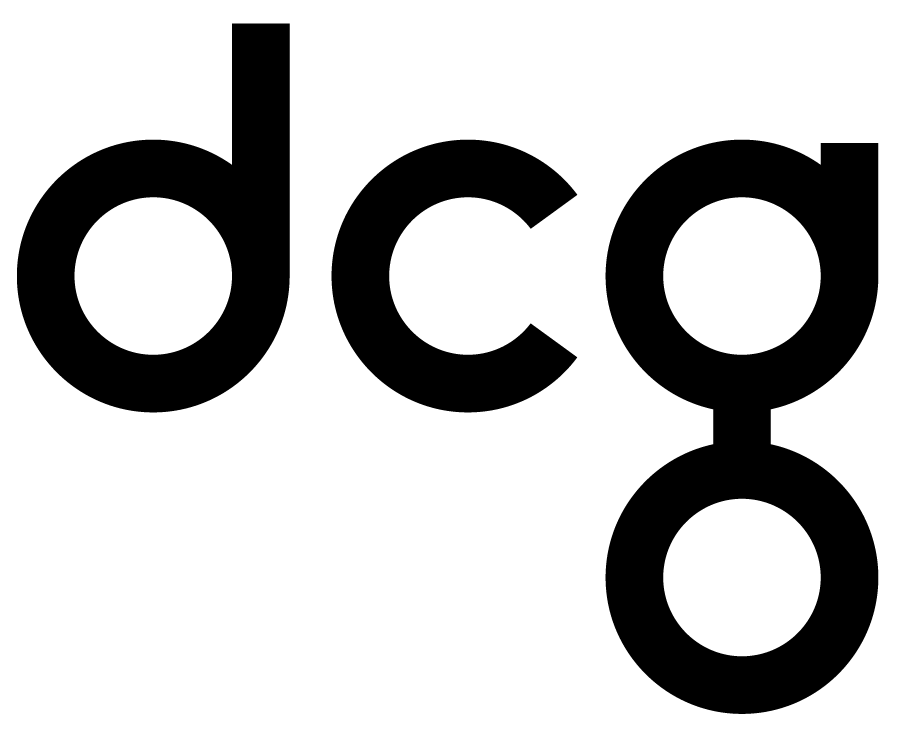
Salesforce to Dynamics 365 Migration
Salesforce is widely implemented as a point solution, while Dynamics 365 offers customers an entire business applications platform and ecosystem. If you’re thinking about migrating from Salesforce to Dynamics 365, it’s crucial to understand the differences in features, licensing, implementation costs, and AI tools.
I am ready to…
Salesforce to Dynamics 365 guide
Your CRM is more than just a sales tool. Understanding how an integrated platform like Dynamics 365 can help your organization reach new goals and streamline operations can help you when deciding which platform to choose. Implementing Dynamics 365 CRM allows organizations to access a wealth of tools beyond simple CRM. Dynamics 365 is beyond SaaS and is a true PaaS (Platform-as-a-Service). Understanding how you can integrate systems seamlessly will help you understand the power and benefits of your migration off Salesforce onto Dynamics 365 CRM.
Get to Know Dynamics 365
Dynamics 365 is an agile business solution. As a portfolio of business applications, Dynamics 365 allows businesses to adapt, evolve, and continuously exceed the standards and goals they set for their organization and operations as a whole. If you’re considering Dynamics 365, you may be drawn to it for one or all of its built-in applications, which include the following apps.
All in all, Dynamics 365 is a suite of business solutions designed to integrate with every level of your business, producing seamless, insightful, and astounding results. It’s more than a simple CRM or Salesforce alternative — Dynamics 365 alone can replace a handful of expensive tools and services you’re trying to stitch together.


Dynamics 365 Sales (CRM)
Make informed moves with a single view of all customers. Create and build relationships, boost sales team productivity, and close more deals.

Dynamics 365 Marketing
Identify the right leads and nurture them to the point of brand ambassador. Create seamless, connected customer experiences & personalize your approach

Dynamics 365 Customer Service
Bring digital and physical customer service together to unify the customer experience. Reduce friction, build brand loyalty and reduce your customer churn.

Dynamics 365 Field Service
Continuously over deliver. Reduce operational costs and improve efficiency with service insights that build a better customer experience.

Dynamics 365 Finance
Reduce financial complexities and expenses. Rework and redefine traditional processes and use automation to save teams’ time.

Dynamics 365 Supply Chain
Start being proactive through operational optimization and automation. Extend the life of assets, reduce costs, and simplify supply chain management.

Dynamics 365 Project Operations
Optimize your field operations and projects by streamlining your resources and project tasks to ensure on-time and on-budget delivery of services.

Dynamics 365 Human Resources
Reduce the effort of workforce administration with better insights, optimized processes, and the opportunity to offer more self-service solutions.

Why Switch From Salesforce to Dynamics 365?
Both Salesforce and Dynamics 365 target a similar user base, with both solutions being suitable for medium-sized businesses to enterprises. The pricing is similar, too, although you’ll find Dynamics 365 has more flexible and affordable pricing at the lower end. At first glance, the Dynamics 365 CRM also offers a very similar feature set next to Salesforce, but when you look more closely, you’ll find there are many reasons to switch.

Platform Advantage
From day one, the development team behind Salesforce approached the platform as a cloud application. If your business is already working strictly with remote servers and prefers browser-based software, that’s fine. However, for those that would rather own a license and host the software themselves, Salesforce isn’t the solution.
Dynamics 365 offers more flexibility of implementation. You can use the Sales and Service components of Dynamics 365 in a fully cloud-based environment, much like Salesforce. Meanwhile, you can deploy options like Finance and Operations on-premises, if you prefer.

Practical Artificial Intelligence
Salesforce and Microsoft both offer enterprise-level resources for companies interested in building or acquiring artificial intelligence (AI) tools. In 2017, Microsoft went a step further and began releasing powerful AI tools as new features for existing Dynamics and Office 365 solutions.
The Sales and Service models, among others, now feature AI integrations within Dynamics 365, from sales predictions to natural language parsing. Other AI features continue to roll out to other aspects of the Dynamics 365 suite, making it an ever-powerful business tool. Meanwhile, Salesforce has worked to integrate AI, like with the Einstein tool, but — like many Salesforce features — it comes at an additional cost.
Dynamics 365 offers more flexibility of implementation. You can use the Sales and Service components of Dynamics 365 in a fully cloud-based environment, much like Salesforce. Meanwhile, you can deploy options like Finance and Operations on-premises, if you prefer.

App Integrations
While Salesforce has worked hard to build up its AppExchange, boasting over 2,600 connections, Microsoft has quickly gained ground with its own AppSource. Serious investments in app connections have helped make Dynamics 365 highly competitive to Salesforce in this regard, too. With Dynamics 365, businesses will enjoy access to Microsoft Power BI and PowerApps as well, helping to turn existing data and connections into custom applications.
Companies that have already invested in some Microsoft software solutions will find Dynamics 365 especially favorable. While Salesforce connects to a handful of Microsoft apps, the native connections of Dynamics 365 certainly have their advantages.
How to Migrate to Dynamics 365 From Salesforce
Moving up from Salesforce to Dynamics 365 is incredibly easy, just follow these steps:
- Cleanse your data
- Map your data
- Plan the integrations.
- Train your users
- Migrate your data
Of course, there is some prep work that you must do before you can jump into the actual migration, so let’s walk through the entire process.

Cleanse Your Data
If you’ve been using Salesforce for some time, there’s a good chance that you have legacy data built up in your database that you no longer use or need. Whenever migrating to a new system, it’s a good idea to cleanse your data set so you aren’t spending time and resources collecting and moving that deadweight.
Additionally, the cleansing process should involve scanning data sets to check for the following:
- Inconsistencies: If your databases currently lack conformity, now is the time to implement and standardize naming conventions to ensure data is processed, organized, and accessible in a consistent manner. Migrating to a new platform is the ideal time to define and remind teams about conformity.
- Completeness: Records with missing data have minimal value. Migration is an excellent time to review records and ensure all information is accurate and as detailed as possible. Merge duplicate records accordingly.
- Accuracy: Individual assets within a record can easily become outdated. Before migration, it may be worthwhile to check for old email addresses and other out-of-date information that you can delete or update.
While you’re putting records within Salesforce under scrutiny, you should apply the same rules and processes to any reports you may have in your Salesforce dashboard. Clean or remove old, unused, or outdated reports.
Map Your Data
After cleansing legacy data out of your system, identify what data is going to be migrated into Dynamics 365. On a more granular level, this means identifying what objects you need to move. You will need to map objects from your Salesforce interface to the Dynamics 365 interface, ensuring that the data types match across platforms.
For simpler migration and testing, many users choose to add a field to the objects/entities that they plan to move. Populate the ID value of that field in Dynamics to give you an easy reference point to the original record within Salesforce. This allows for quick testing and comparison so you know your data is getting migrated correctly, before you start pulling in all of your records.
Plan Integrations
Salesforce is well known for its ability to integrate with thousands of applications. As a business, it’s easy to end up tying in a bunch of software that you may or may not use today. Before migrating, another best practice involves reviewing your current integrations and making plans accordingly.
Decide what Dynamics 365 needs to integrate with and make a plan for tying those solutions together. Meanwhile, review the full list of integrations and identify those that may no longer be necessary. Since the Dynamics 365 platform may be replacing more than just Salesforce in your business stack, having a complete understanding of Dynamics’ feature set will help you plan integrations accordingly, so ask yourself:
- Does this tool work for the business?
- Can Dynamics replace this product with its built-in capabilities?
- Is this tool compatible with Dynamics? If not, is there a similar connector?
Discussing integration plans and requirements with your Dynamics implementation team early on will ensure a smooth transition that sticks to your business’s timeline.

Sample Solution Architecture and Integrations Plan for Dynamics 365 for Healthcare
Train Your Users
The Dynamics 365 platform is filled with features, most of which are extremely intuitive. However, every user needs some amount of training to be successful with a new platform and make the most of its capabilities. As such, make a plan for training users and begin to implement that plan as the migration day approaches.
Before Dynamics goes live within your business, brief all of its users on why the company is making the switch and the benefits each individual can expect to gain by adopting Dynamics in their day-to-day work. Garnering this company-wide support is important to ensuring the success of any new tool or software.
Each business’s plan for user training and rollout will be unique to its needs. As such, planning the user adoption side of the implementation process is just as important as every other step in the migration. Fortunately, Dynamics 365 has a myriad of resources to help your company onboard users and ensure their success.
Migrate Your Data
The actual data migration will prove quick and easy, given the right assistance. Before you begin the process, make sure that:
- Every field you plan to export is set to “Visible” within Salesforce. Hidden fields will not export and can lead to missing data.
- Formula fields and some other field types cannot be exported, so make note of those in advance and make a plan to recreate them within Dynamics later.
- In Salesforce Record IDs are case sensitive. In Dynamics, they are not.
With a migration and implementation partner, the rest of the work will be done for you, allowing your business to focus on user adoption and success.

Modern ETL Architecture for Data Migrations
Salesforce to Dynamics 365 Migration Assistance
Salesforce and Dynamics 365 are both powerful business solutions, but many companies are finding that Microsoft’s suite simply offers more flexibility and forward-looking features when it comes to their business’s operations. Fortunately, data migration between these two platforms is incredibly easy, and Dynamic Consultants Group can help you make the switch.
If you’re ready to migrate from Salesforce to Dynamics 365, reach out to DCG for assistance to ensure a smooth, stress-free implementation.

.svg)


.png)



.png)











